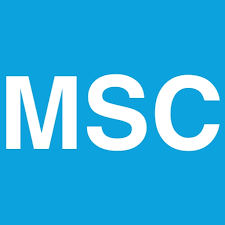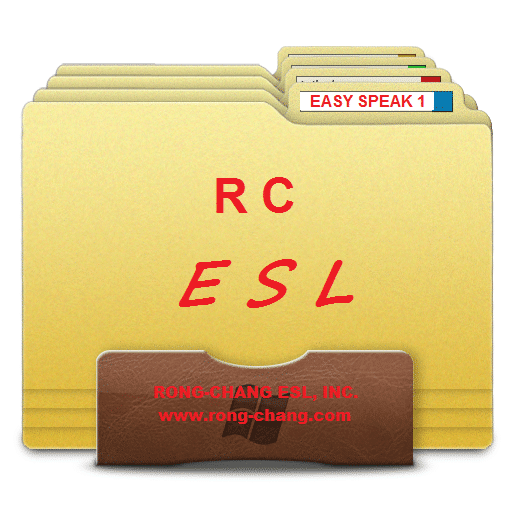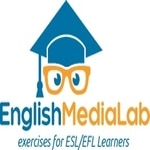
10 ESL Speaking Websites for Students
Is there anything more rewarding than hearing an ESL student speak in English and truly sound like a native?
Speaking is arguably the most difficult part of mastering any language.
You’ve likely spent an insane amount of class time correcting pronunciation, reviewing colloquialisms and generally trying to build the students’ confidence enough to speak English freely.
Thankfully, the ESL speaking websites below can help your students achieve the progress you’ve been searching for.
Contents
- 1. ESL Conversation Questions
- 2. FluentU
- 3. TalkEnglish.com
- 4. BBC Learning English
- 5. My Speech Class
- 6. Duolingo
- 7. ESL Fast
- 8. English Central
- 9. English Media Lab
- 10. ESL Gold
- Why Use ESL Speaking Websites in Class?
Download: This blog post is available as a convenient and portable PDF that you can take anywhere. Click here to get a copy. (Download)
1. ESL Conversation Questions
As the website name suggests, ESL Conversation Questions is your one-stop shop for finding questions to spark discussion in your classroom.
You can browse questions by topic, ranging from aliens (“Do you believe there is other life in the universe?”) to travel (“Where are the best places for adventure vacations?”).
You may also choose to sort questions by grammar or vocabulary. For example, search for questions using adverbs of frequency, comparatives, phrasal verbs and more.
The most unique feature of this website is probably that you can search for questions to accompany the most popular ESL textbooks out there.
Because of the site’s wide range of questions and options makes it a great resource for learners of any age or level.
2. FluentU
The best way for students to become strong speakers is by immersing themselves in the language, and FluentU makes classroom immersion completely attainable.
FluentU features videos that English speakers actually watch, so students can immerse themselves in the culture and pick up native accents. This way, students can learn through movie clips, TV shows, songs and even popular vlogs.
This lets students learn vocabulary in context–vocabulary that they can easily use while speaking because it’s relevant.
Each video has interactive subtitles that break down every word, plus transcripts, vocabulary lists and quizzes afterwards. The videos are also sorted by category and level, so you can easily find ones for your students’ level or the topic you’re discussing. On top of this, the videos are constantly updated.
3. TalkEnglish.com
![]()
If you’re looking for inspiration for what to teach in an English speaking class, you can get plenty of material from TalkEnglish.com. Its lessons range from beginner to advanced, and they’re centered on common phrases that students will likely use in the real world.
Their English speaking basics course teaches contractions and helpful vocabulary like “You should…, “I’m…” and “How about…” Each lesson comes with a conversation sample that you can let your students listen to, followed by sentences with audio that show how to use the new phrase.
For English students who are more advanced, there are situation-specific lessons, including for dating, school and job interviews.
Since your students would benefit from listening to a variety of English-speaking voices (aside from yours!), check out the website’s listening modules too. These feature realistic conversations, complete with listening comprehension quizzes.
4. BBC Learning English

For British English classes, one must-have website on your toolbox would be BBC Learning English. They have a variety of courses for all levels, but the most relevant would be their speaking courses, which are for intermediate learners and above.
One speaking course is The English We Speak, which comes in three-minute episodes. These teach terms like “scatterbrain” and “each to their own,” all with high-quality audio conversations, a vocabulary list and activities that you can go through with your students.
Another course is How to Speak English. The focus here is on more standard topics, like asking for directions and disagreeing.
If you notice your students consistently making the same pronunciation mistakes, then you can also use BBC Learning English’s pronunciation course to clarify specific sounds for your students. These also cover more advanced pronunciation points like consonant-vowel linking, which can help your students develop a more natural English accent!
5. My Speech Class

My Speech Class is a completely different kind of ESL speaking website. It isn’t for conversations or acting out skits–it’s for public speaking. Use this site to find topics for your students’ English speeches if they’re already at upper-intermediate or above.
Each section includes helpful information, such as how to choose a topic and how to deliver a specific type of speech, making the site an excellent resource for students.
You can filter by speech type, such as persuasive, informative or humorous. My Speech Class even offers more specific topics, like speeches for kids, two-minute talks and five-minute talks. There are thousands of ideas to choose from!
Here are a few examples:
- Persuasive: Should we donate unused food from supermarkets?
- For kids: My favorite season of the year is…
- Argumentative: The negative effects of Ronald Reagan’s “War on Drugs”
- Entertaining: My worst date
- Policy: Why cities should insist on having their own local economic development policy
And that’s just the tip of the iceberg!
6. Duolingo

Duolingo is already incredibly popular as a language learning app, but did you know that it also has special features for teachers?
Duolingo for Schools lets you create in-app groups for your students, then assign them homework in the form of Duolingo lessons and games. Duolingo’s English material is already arranged based on CEFR levels, so it’s easy to find exercises that match your current class. You can even assign students different exercises based on what they need to improve the most, like listening or grammar.
Even if you don’t get a teacher subscription, feel free to add Duolingo into your lessons directly. For example, you can let your class warm up with a 5- to 10-minute Duolingo session based on concepts you’ve reviewed before. Duolingo lessons are meant to be fun and bite-sized, so they’re great for getting students engaged.
For more on Duolingo, here’s a comprehensive review.
7. ESL Fast
ESL Fast is a great resource for helping students practice dialogue. Browse conversations by topics, starting with “It’s Time to Get Up,” all the way to “Comments on the New President.”
Each topic comes with a printed dialogue and an audio recording of native speakers reciting the conversation.
There are multiple ways to use these dialogues in a lesson plan. For example, you may have students pair up and take turns speaking as Person A and Person B, or they can act out the conversations in front of the class.
Each topic has only a few short example dialogues (and sometimes only one), so a fun, interactive activity could be to have students recite the conversation, then write their own dialogues about the topic.
ESL Fast splits subjects into beginner and intermediate dialogues and the audio recordings are spoken slowly, so lower-level learners can easily follow along.
8. English Central

English Central is another awesome website with tons of video material–all meant to help English learners speak better.
It offers more than 20,000 lessons that consist of short videos. Each video is supplemented by vocabulary lists and exercises, and students are encouraged to practice repeating sentences out loud from the video. The website then uses speech recognition to give fast feedback to students.
Like FluentU and Duolingo, English Central also offers support for ESL teachers. You can track your students’ progress and have them watch specific videos, with themes like business and conversational English.
One cool feature that’s still being tested is getting to talk to AI. An AI chatbot types out open-ended questions about the video, then students have to speak their answers out loud.
9. English Media Lab
English Media Lab is a great resource for learning a variety of English skills, such as grammar and vocabulary. To focus specifically on speaking, click on the “pronunciation” tab in the menu.
The website provides videos, but these videos are a little different than the ones on other sites on this list. The videos are instructional and focus on specific English speaking concepts. For example, you’ll find videos on topics like diphthongs, short vs. long vowel sounds and voiced vs. voiceless consonants. After your students watch a video, they’ll engage in interactive exercises and quizzes to test their knowledge of the pronunciation concept.
The volume and variety of English Media Lab’s pronunciation resources are pretty impressive. You’ll find printable worksheets, charts, flashcards, ebooks, audiobooks, games and more.
English Media Lab’s activities are geared toward kids and novice students.
10. ESL Gold
Similar to English Media Lab, ESL Gold helps students build on several skills. It offers free, thorough ESL lessons for all levels, and they’re speaking-intensive!
For instance, you could teach the lesson on family and relationships. As a warm-up activity, your students will look at the provided picture of a family and answer questions about both the photo and their own families.
Then they’ll listen to the related vocabulary. They’ll pair up with a partner to tell them about their family, using ESL Gold example sentences to guide them along. Finally, the website suggests ways students can practice talking about family outside of class.
Maybe you’re just looking for individual activities for your lesson rather than a full lesson plan. ESL Gold offers articles your students can read aloud and discuss together, videos and example dialogues to introduce phrases for conversation and more.
Why Use ESL Speaking Websites in Class?
- They do the work for you. There are sites overflowing with speaking warm-up activities, games, complete lesson plans and even self-grading quizzes. These features can save you significant time creating lesson plans. You won’t have to write your own dialogues for students to act out or grade tests while you watch “The Bachelorette” after work.
- You have access to a wide range of speaking exercises. It’s all too easy to run out of ideas for how to engage ESL learners. I know I’ve found myself repeating the same activities every five class periods or so. ESL speaking websites provide you with both new ideas and example content you can use in the classroom.
- Students can engage with the material. Growing up, the class I dreaded most every week was Spanish because most of the time, we went around the class and took turns reading scripted conversations from our textbook. These speaking websites for students can make speaking practice more entertaining, though, compared to reading from a textbook.
Imagine watching your students reenact an interview with a Hollywood celebrity, listening to them read an article about America’s fastest growing cities aloud or hearing them recite a dialogue they wrote themselves.
Teaching pronunciation isn’t exactly a piece of cake. When a student masters a difficult pronunciation concept, it can feel like you’re both winners. These 10 ESL speaking websites for students can set you both up for success.
Download: This blog post is available as a convenient and portable PDF that you can take anywhere. Click here to get a copy. (Download)





